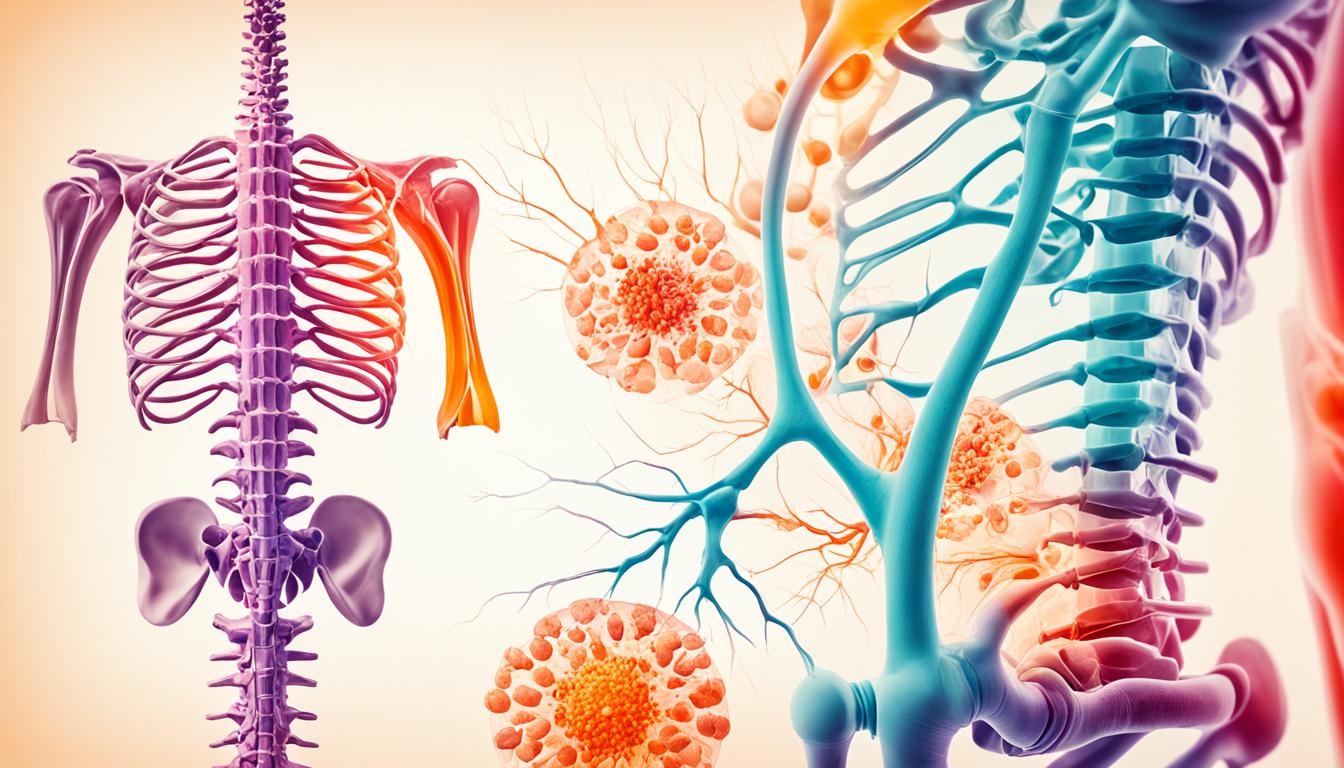Sacroiliitis is a condition causing severe pain in the lower back and buttock. It feels like a sharp pain going down the leg. You might feel it more when sitting or moving in bed. It can also make your hips and lower back stiff in the morning. Women and those with too much or odd joint movement are at higher risk. Pregnant women face more strain, which can also cause this condition.
Diagnosing sacroiliitis is tough because its signs are like other back problems. Doctors use a patient’s history, check them physically, and do some tests to reach a correct conclusion. Treatments include using ice or heat, taking certain medicines, getting adjustments from a chiropractor, wearing supportive belts, doing physical therapy or exercises, having specific joint injections, and sometimes, surgery. Another option is stem cell therapy, a new method that involves injecting stem cells into the joint. This aims to boost its healing and growth.
Key Takeaways:
- Sacroiliitis causes severe pain in the lower back and buttock.
- The condition is more common in young and middle-aged women.
- Excessive or abnormal movement of the sacroiliac joint is a common cause of sacroiliitis.
- Treatment options for sacroiliitis include ice and heat therapy, medications, chiropractic manipulations, supports or braces, physical therapy and exercise, sacroiliac joint injections, and surgical options.
- Stem cell therapy is an innovative and non-invasive treatment option for sacroiliitis that promotes healing and regeneration.
Causes and Diagnosis of Sacroiliitis
Sacroiliitis is a condition causing severe pain in the lower back and buttock. Knowing its causes and how to diagnose it right is key. This helps in treating and managing the condition.
Causes of Sacroiliitis
Excessive movement or hypermobility of the joint are common causes. These can happen due to hormonal shifts in pregnancy. Such changes can make the sacroiliac joint move too much, causing pain. Joint trauma, like fractures, also plays a role.
But, not moving enough or hypomobility can be a cause too. It happens after a long period of not being active. This leads to joint stiffness and pain.
Other causes may include:
- Arthritis: Arthritis types like ankylosing spondylitis or psoriatic arthritis.
- Inflammatory conditions: Diseases like inflammatory bowel disease or lupus.
- Infections: Infections from bacteria, viruses, or fungi can also inflame the joint.
Diagnosis of Sacroiliitis
Diagnosing sacroiliitis is not easy. Its symptoms overlap with other back pain issues. A full diagnosis takes looking at medical history, a deep physical exam, and sometimes special injections.
The injections include lidocaine inside the joint, guided by CT. This procedure helps pinpoint if the joint is the pain source. If the pain gets better, it confirms sacroiliac joint issues.
Other tools for diagnosis:
- MRI scans: They give detailed images, spotting inflammation and joint damage.
- Radiomics technology: This new tech uses MRI to find signs of sacroiliitis, like inflammation.
A correct diagnosis is crucial for a good treatment plan and dealing with sacroiliitis’s real causes.
| Causes of Sacroiliitis | Diagnostic Tools |
|---|---|
| Excessive joint movement or hypermobility | Diagnostic injections |
| Pregnancy hormones | MRI scans |
| Trauma or fractures | Radiomics technology |
| Immobility or hypomobility | |
| Arthritis and inflammatory conditions | |
| Infections |
Stem Cell Therapy for Sacroiliitis
Stem cell therapy is a new way to treat sacroiliitis without surgery. This condition leads to strong, long-lasting pain in the lower spine and hips. The method uses the patient’s own stem cells, which are injected into the problem joint directly.
These cells help the joint heal and become strong again. This brings relief from the pain and helps the joint work better. Choosing this therapy means patients might not need as much surgery or shots of steroids.
Adding treatments like shockwave therapy to stem cell therapy can make it even better. Doctors use CT scans to make sure the stem cells go to the right place. Stem cell therapy lowers pain and improves how the joint moves. It’s a great option to help patients handle sacroiliitis without big surgeries.

